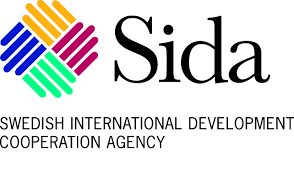-
Who We Are
WHO WE AREThe International Organization for Migration (IOM) is part of the United Nations System as the leading inter-governmental organization promoting humane and orderly migration for the benefit of all. IOM has had a presence in Haiti since 1994.
About
About
IOM Global
IOM Global
-
What We Do
Our WorkAs the leading inter-governmental organization promoting humane and orderly migration, IOM plays a key role to support the achievement of the 2030 Agenda through different areas of intervention that connect both humanitarian assistance and sustainable development. In Haiti, IOM partners with the Government on migration management and capacity building programs, as well as to address and mitigate the effect that natural disasters have on the most vulnerable population.
Cross-cutting (Global)
Cross-cutting (Global)
- Data and Resources
- Take Action
- 2030 Agenda
Context
On October 4th 2016, Hurricane Matthew made landfall in Haiti, with heavy winds and rain barreling to the southern coastal towns. This hurricane resulted in the destruction of many houses, tin-roof homes, schools, public buildings, and the displacement of families to pre-identified evacuation centers. The passage of Hurricane Matthew caused widespread damage to homes, public buildings and infrastructures. Nearly seven months after the hurricane, many remain in overcrowded shelters, facing unsanitary conditions, a dire protection situation and extremely limited assistance.
Following a request from the Ministry of Interior (MICT in French), IOM tailored its Displacement Tracking Matrix (DTM) process to respond to the needs following the hurricane. The DTM in response to Hurricane Matthew was implemented in three independent modules: 1) Displacement Tracking 2) Evacuation center assessment and registration 3) Building Inventory in pre-identified communes. The urgent need of multi-sectoral assistance for those being expelled from schools and shelters as well as to assist the most vulnerable in areas of return, remains eight months after the hurricane. Due to the limited funding received from the Flash Appeal, available resources to provide basic assistance and shelter support are limited and the window to reach the most vulnerable people with lifesaving assistance is narrow.
Methodology
The building inventory consists of the cartography and listing of all buildings housing the targeted affected population. This step includes a basic damage assessment of each building/plot, as well as preliminary basic information on the household residing on the building/plot (aiming at identifying displacement within host communities). IOM teams aided by communal DPC agents carried out a door-to-door building inventory to confirm and refine the assessments on the damage levels. This process was initially piloted in Dame Marie and Beaumont and subsequently extended to the communes of Chambellan and Moron.
The door-to-door building inventory is carried out in tandem with protection teams to gather information on Protection indicators including gender disaggregated data and vulnerability/protection needs for onward referral to relevant and non-state partners. The building Inventory and household registration is carried out at the neighborhood level, using the geographical unit coined by the National Statistics Institute (IHSI in French), called “Section d’Enumeration” or SDE.
Prior to the intervention, preliminary meetings were held with the Mayor of each commune, to present the DTM methodology and outline the building inventory activities. Following the presentation, DPC agents were appointed by the Mayor’s office to assist and collaborate with IOM to carry out the building inventory. A total of 236 DPC agents are employed for this exercise: 118 in Moron and 118 in Chambellan.
Results
Challenges
- Urban vs rural areas
While urban areas in each of the communes were easier to access, the teams encountered particular difficulties in reaching SDEs located in remote and rural areas. Many of these areas are sometimes only accessible by foot and houses are usual quite dispersed from one another, thus considerably reducing the targeted daily coverage.
- Satellite images
The satellite images used to better locate the buildings had a precision of 15 to 20 meters thus making the geo-location process in the field more difficult. Field teams often had to resort to drawing sketches and polygons representing houses to ensure proper geo-referencing.
- Bad weather
During April and May 2017, the southern peninsula experienced heavy rains which lead to flooding and landslides, which has delayed and hindered IOM’s DTM and building inventory activities. Field agents have had to work in difficult conditions to carry out the building inventory.
Way forward
As expected, all building inventory activities ended on 30 June 2017. The information collected through this exercise has been communicated to Protection teams who deploy staff to assist the most vulnerable individuals (such as chronically ill, elderly, pregnant or breastfeeding women, presumed unaccompanied minors, people with disabilities, single-headed household, etc) through sensitization sessions. On this basis, IOM will select beneficiaries who will be provided a package including training on safe and wind-resistant reconstruction/repair techniques coupled with the provision of a standardized household Shelter Repair Kit (includes: wood, CGI sheeting, nails, etc.) to a total of 1,800 vulnerable households in Dame Marie and Chambellan or Moron.
As the standardized shelter kits will not suffice to all of the targeted households, IOM will also provide a conditional cash grant to enable households to carry out additional home improvements or hire labor assistance to carry out the repair works. In addition, the most vulnerable families identified through the protection screening will receive an addition conditional cash grant to cover labor costs or additional arrangements based on the nature of their vulnerability.
Financed by

